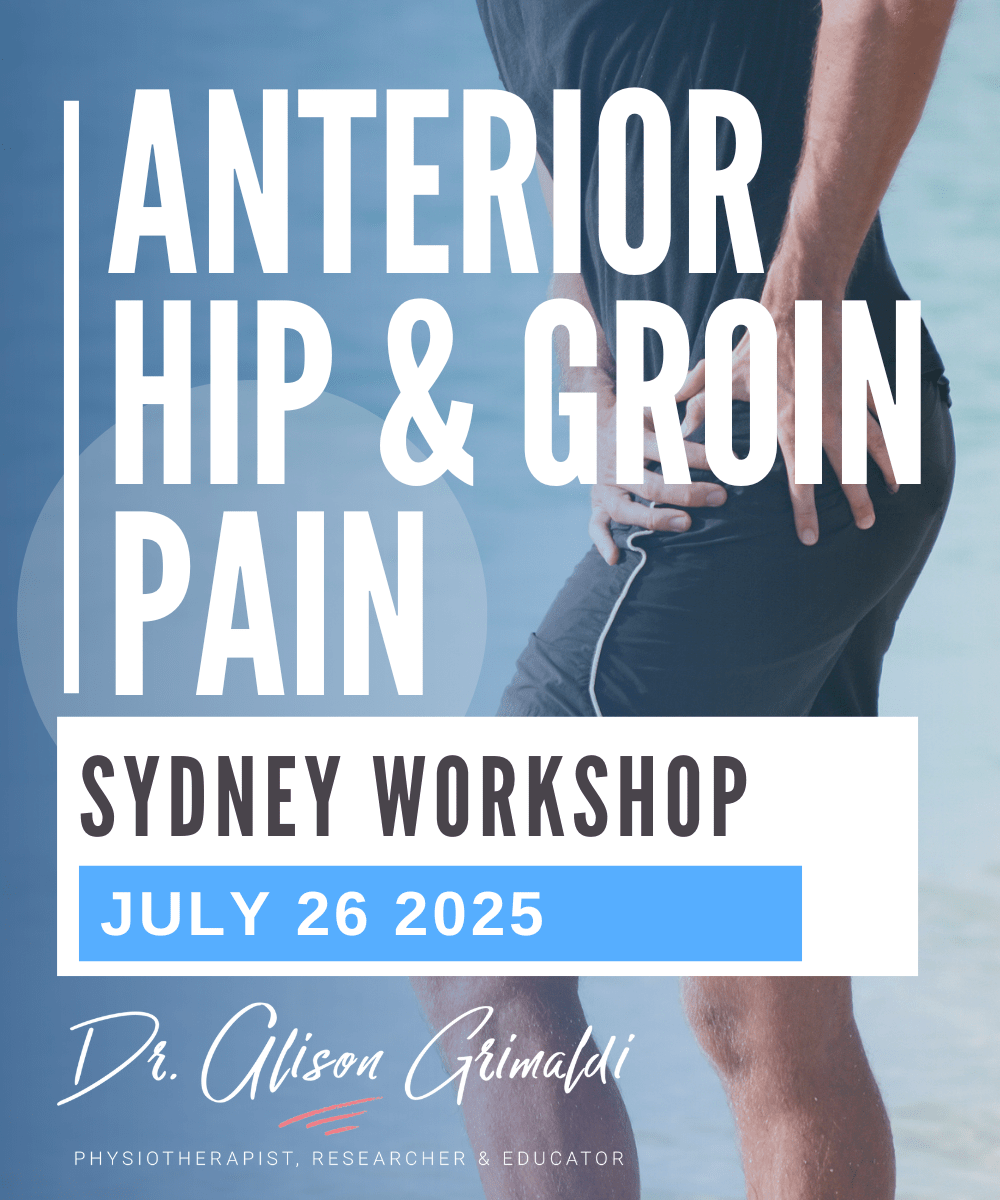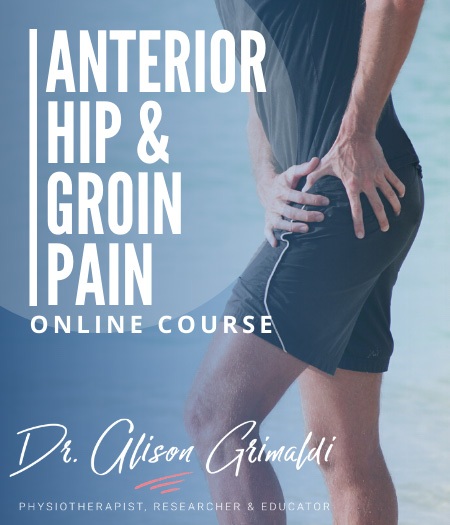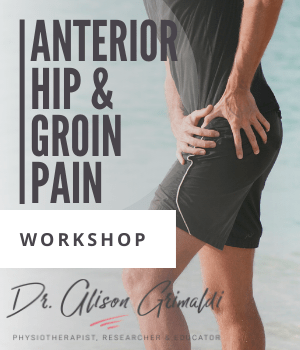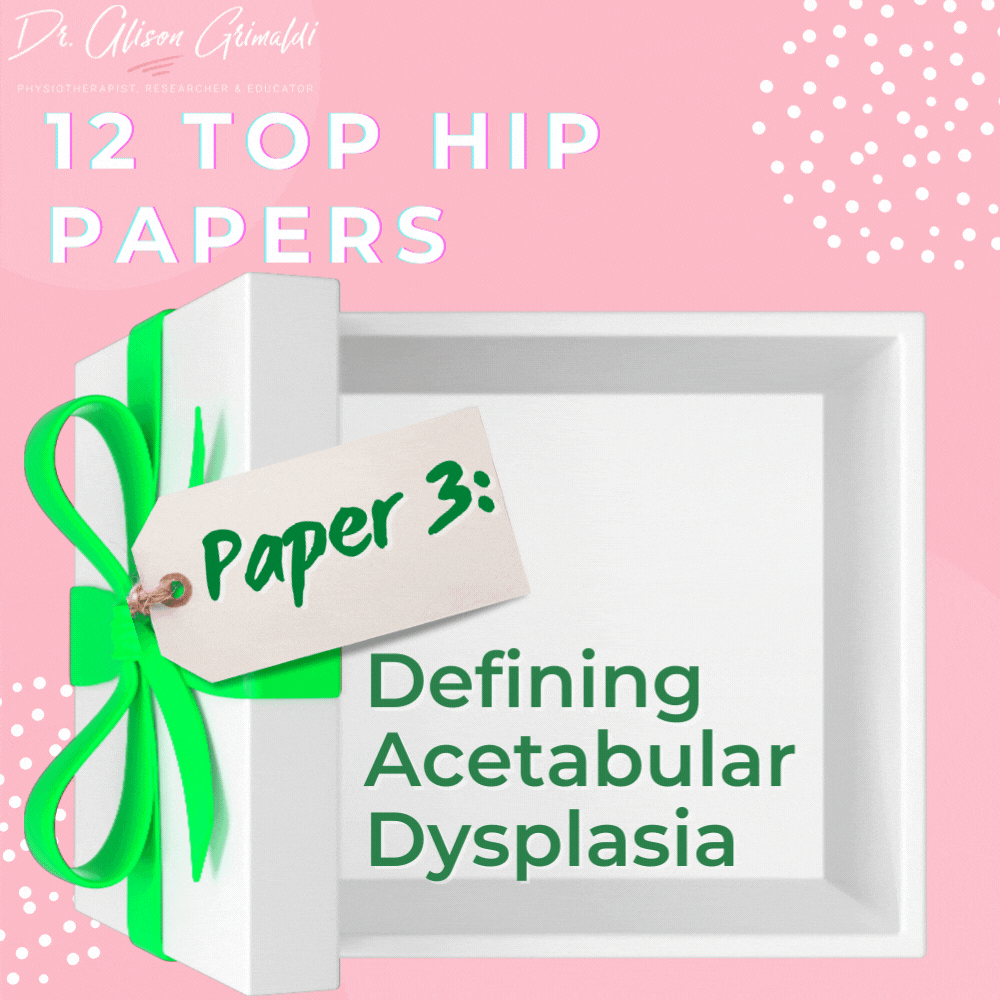4 of 12 Top Hip Papers – Instability after hip arthroscopy

Day 4 already! If you missed Day 1, Day 2 or Day 3 of my 12 Top Hip Papers series featuring 12 top hip papers, you might like to read these also. In the first 2 days we covered a couple of important FAIS papers and yesterday an excellent paper on acetabular dysplasia. Today we continue a theme of joint instability to take a look at one of the first papers to really highlight the issue of instability after hip arthroscopy. Gross instability is likely under-reported in the literature and micro-instability likely under-recognized following hip arthroscopy. Below you'll find an infographic and some key learnings from this paper.
Can't make the workshop? Do the Online Course

For your convenience, we have also developed this content into a FREE 26-page full colour ebook!
Packed full of 12 Top Hip Papers - peer reviewed scientific papers that have contributed to our understanding of hip conditions and/or the assessment or management of hip pain or injury.
PAPER 4: Gross Instability After Hip Arthroscopy: An Analysis of Case Reports Evaluating Surgical and Patient Factors
Iatrogenic hip instability is increasingly recognised as a cause of persistent pain and disability following hip arthroscopy. Physiotherapists and other rehab professionals often underestimate the potential risk of instability and even frank dislocation following hip arthroscopy, even months after surgery. It concerns me how many patients are prescribed standing or prone through-range hip extension exercises in the early post operative period. The innocuously small portals visible at skin level belie the often dramatic insult that has been imparted on the anterior stability mechanisms of the hip joint.
I have added this paper to my 12 top papers series as it was one of the first that drew together the disparate case studies published (likely the tip of a much larger iceberg) and started ringing alarm bells for surgeons. The implications for those providing post-operative care were equally profound. Since this paper was published it seems that the floodgates have begun to open, and a number of recent papers have reported poorer outcomes following surgery with unrepaired versus repaired capsulotomy. The role of post-operative microinstability has now been recognised in many with persistent pain and disability following hip arthroscopy.
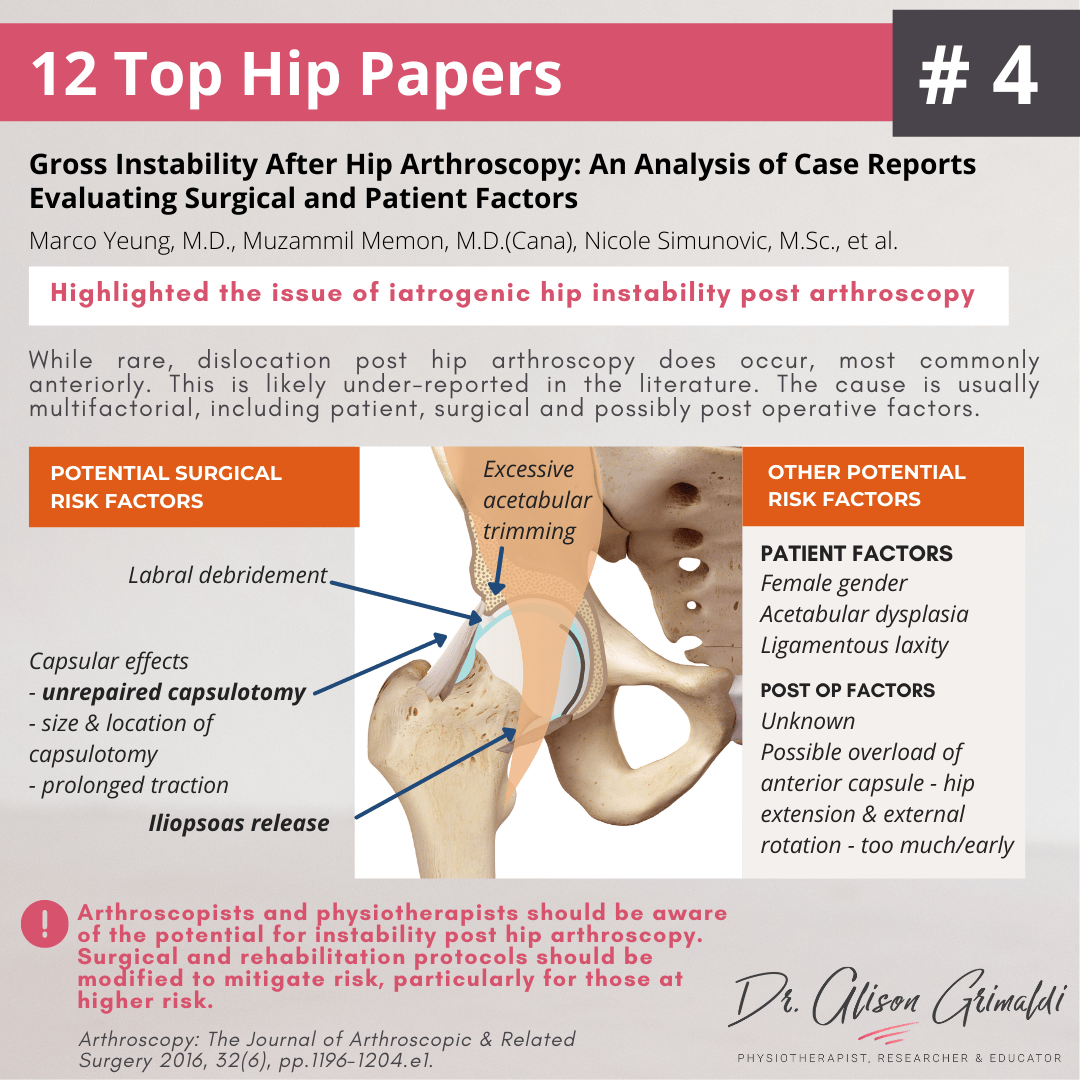
Key learnings about instability after hip arthroscopy:
- Gross instability (dislocation – most commonly anteriorly) may occur even months after hip arthroscopy.
- The risk is likely to be multifactorial including patient, surgical and post operative factors.
- Patient risk factors include female gender, acetabular dysplasia and ligamentous laxity.
- The strongest surgical factors appear to be an unrepaired capsulotomy and iliopsoas release, but debridement of the labrum (rather than repair) and acetabular rim trimming may also reduce stability post operatively.
- Early and/or excessive hip extension and/or external rotation will increase risk of anterior dislocation.
You can learn more about assessing and managing anterior hip instability in my Anterior Hip & Groin Pain Course and workshops - read more below.
Another great Anterior Hip Pain blog
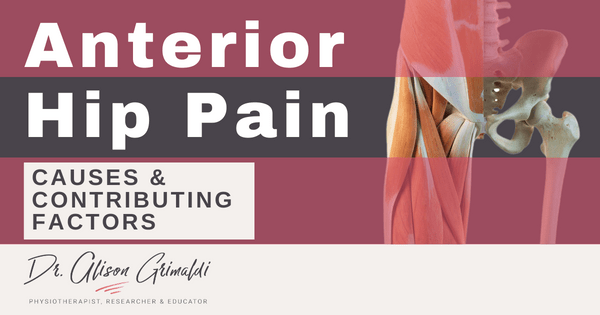
Anterior Hip Pain: Causes & Contributing Factors
Adequate consideration of individual causes and contributing factors is important for best outcomes.

Join Hip Academy Today
Join Hip Academy Today
By becoming a member today you can enjoy the benefits of a world class educational Hip Program, specifically designed by Dr Alison Grimaldi to help improve your knowledge surrounding the Hip and Pelvis, and become an expert in your field.
By becoming a member today you can enjoy the benefits of a world class educational Hip Program, specifically designed by Dr Alison Grimaldi to help improve your knowledge surrounding the Hip and Pelvis, and become an expert in your field.
Interested in a live workshop on this topic?
Workshop registration is now open for 2022. If you are in Australia, you might like to attend my face-to-face Brisbane workshops in July 2022. If Brisbane is too far, you might like to join us for an action packed 6 hours (2 x 3 hour blocks) interactive zoom online workshop in May 2022. Both workshops include 3 months access to the online learning course, and the online workshop includes 6 weeks access to recordings.

